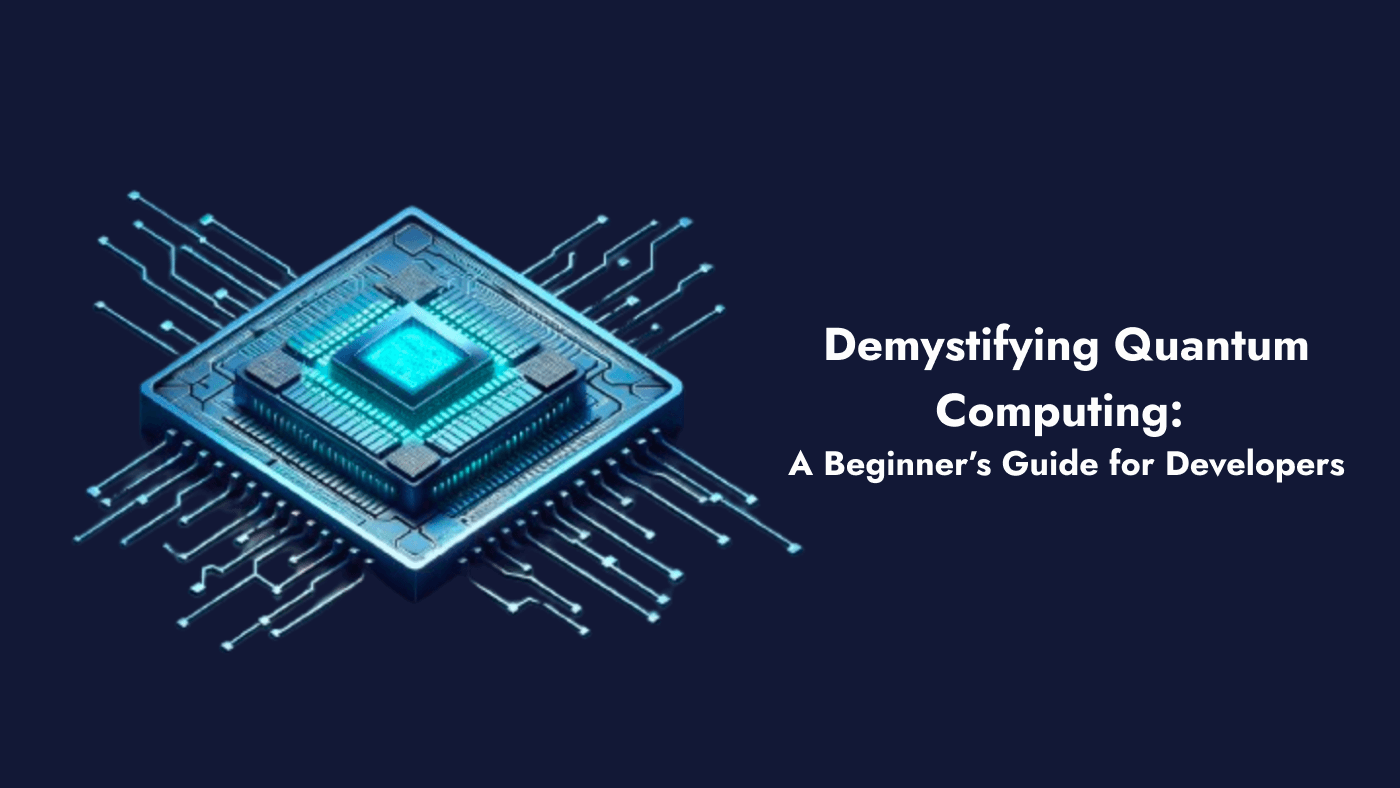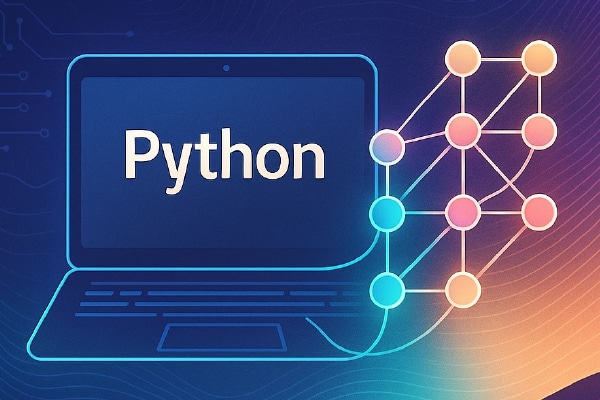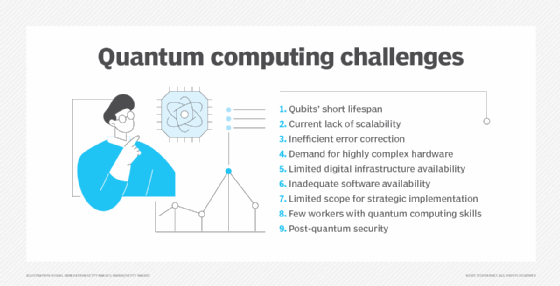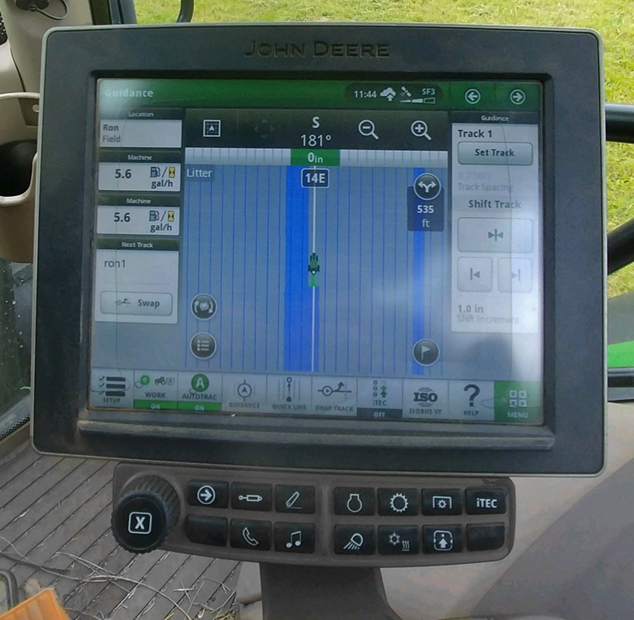Discover Pandipedia
Pandipedia is the world's first encyclopaedia of machine generated content approved by humans. You can contribute by simply searching and clicking/tapping on "Add To Pandipedia" in the answer you like. Learn More
Expand the world's knowledge as you search and help others. Go you!
Is a breakthrough in the Ukraine-Russia conflict on the horizon? Major diplomatic moves and unexpected developments are shaping the future, and you won't want to miss these must-know updates!
🧵 1/6
Trump's Peace Talks Gain Traction: President Trump has indicated that a peace proposal could soon come into play as his son-in-law may join envoy Steve Witkoff in talks with Putin. This could change the dynamics of the ongoing war. How effective will these talks be? 🕊️ According to CNN.
🧵 2/6
Former CIA Director Weighs In: Leon Panetta suggests Ukraine may need to signal a pause on NATO membership to facilitate peace negotiations. Will this be the key compromise to move forward? This has huge implications for NATO's future. 🤔 Source: CNN.
🧵 3/6
Flurry of Diplomacy: High-profile meetings in Europe and the U.S. have not yet yielded a resolution, with crucial differences still on the table. Could prolonging these discussions be more detrimental than beneficial? 👀 As reported by CNN.
🧵 4/6
Putin Sees Grounds for Negotiation: Russian President Putin has described Trump's peace plan as a basis for future talks, but he insists Ukrainian forces must retreat from occupied territories. Will Ukraine concede? ⚔️ According to Independent.
🧵 5/6
What do you think is the biggest barrier to peace? Which of these developments surprised you most? Share your thoughts below!
🧵 6/6
Sources from:
Let's look at alternatives:
- Modify the query.
- Start a new thread.
- Remove sources (if manually added).
Introduction
Sleep has long captivated scientific and consumer interest alike, evolving from rudimentary observations to sophisticated digital monitoring systems. Early investigations into sleep began centuries ago, yet modern sleep technology truly took shape with the advent of electrophysiological methods. The development of electroencephalography (EEG) in the 1920s is recognized as a pivotal moment that transformed sleep research by allowing scientists to record brain activity during sleep[2]. This breakthrough laid the groundwork for the later establishment of polysomnography, a comprehensive method that revolutionized sleep diagnostics.
Historical Milestones and the Rise of Polysomnography
The 1960s marked a turning point with the evolution of polysomnography (PSG), now considered the gold standard in sleep measurement. PSG systems simultaneously record brain waves, eye movements, muscle activity, and cardiovascular parameters, enabling a detailed analysis of sleep stages and pathologies. Early work in standardizing sleep stage scoring, including the establishment of criteria for light, deep, and REM sleep, set the basis for both clinical diagnosis and sleep research[9]. Clinicians relied on these detailed recordings to diagnose conditions such as obstructive sleep apnea (OSA) and REM sleep behavior disorder, employing PSG as an essential tool in their diagnostic arsenal[3].
Emergence of Wearable Technologies
Over the past few decades, the limitations of PSG—its complexity, intrusiveness, and dependence on clinical settings—have spurred a search for more convenient alternatives. Technological breakthroughs in miniaturization and sensor engineering have given rise to wearable devices that capture key sleep-related physiological signals. Novel wearable sensors now measure parameters such as heart rate, movement, and even EEG from nontraditional locations, including the wrist, ear, and finger. For instance, smart rings have emerged as a promising form factor, offering the ability to continuously track pulse wave data and heart rate variability (HRV) with high accuracy while remaining comfortable and unobtrusive[11]. This transition from bulky hospital equipment to portable sensors has contributed to a broader adoption of sleep monitoring outside the clinical environment.
Shifting Consumer Attitudes and Smart Devices

As consumers have become increasingly health-conscious, their attitudes have shifted in favor of devices that offer accurate sleep insights with minimal disruption to daily life. Early consumer wearables, such as wrist-worn accelerometers and basic actigraphy devices, paved the way for more sophisticated technologies by providing accessible metrics on sleep duration and quality. Over time, the market has expanded to include smartwatches, ring-based monitors, and even devices that integrate sleep tracking with other health metrics like blood oxygen levels and heart rate. Consumer reviews and surveys indicate that many users appreciate the noninvasive nature of these devices and their ability to provide actionable feedback on sleep hygiene[4]. The integration of additional sensors—tracking environmental factors such as temperature and noise—has further improved the personalization and utility of these smart sleep monitors.
Future Projections: Contactless Radar Sensors and AI Integration
Looking to the future, the next wave of sleep technology is expected to further enhance user convenience and data accuracy by eliminating the need for body-worn sensors altogether. Advances in radar technology, which originally found applications in industrial settings, are now being adapted for sleep monitoring. Contactless radar sensors use electromagnetic waves to capture physiological signals such as breathing patterns, heart rate, and even subtle body movements, all without direct contact with the user[1]. These systems promise truly ambient monitoring that can be seamlessly integrated into household electronics like TVs, smart beds, or air conditioners. Coupled with artificial intelligence algorithms, future systems are anticipated to analyze large datasets in real time, learn user-specific sleep habits, and provide hyper-personalized recommendations for improved sleep quality[4].
Conclusion

The evolution of sleep monitoring technology reflects a broader trend in healthcare toward personalized, accessible, and user-friendly diagnostics. Beginning with the groundbreaking introduction of EEG and the subsequent development of polysomnography in the mid-20th century, sleep assessment advanced significantly in clinical settings. The later emergence of wearable and smart ring technologies has shifted sleep monitoring into the consumer space, making it possible for individuals to track their sleep health continuously and in the comfort of their own homes. With current research focused on enhancing sensor accuracy, algorithm performance, and device integration, the future of sleep technology appears poised to incorporate contactless radar sensors and robust AI-driven analytics. These advancements are expected to democratize sleep health further, offering unprecedented insights and paving the way for more proactive management of sleep disorders.
Let's look at alternatives:
- Modify the query.
- Start a new thread.
- Remove sources (if manually added).
Get more accurate answers with Super Pandi, upload files, personalised discovery feed, save searches and contribute to the PandiPedia.
Introduction: A New Computing Paradigm

The transition from classical to quantum computing represents a fundamental shift in how information is processed[13]. Classical computers use bits, which can be either a 0 or a 1, but quantum computers use quantum bits, or qubits[8]. A key difference is that qubits can exist in a combination of 0 and 1 simultaneously, a property known as superposition[8]. Additionally, multiple qubits can become entangled, meaning their states are linked; measuring one instantly correlates with the state of the other, regardless of distance[8]. This allows quantum computers to process a vast amount of possibilities concurrently, offering the potential to solve problems currently intractable for classical machines[13]. However, quantum computing is not a replacement for classical computing. Instead, it complements it, with the two working together to solve complex problems[5]. As the field matures, there is a growing need for developers to become 'quantum-ready' and translate industry challenges into problems that quantum computers can solve[8].
Laying the Foundation: Essential Math and Physics

For a classical developer moving into the quantum space, a solid mathematical foundation is crucial[13]. The most important area to refresh is linear algebra, which is essential for understanding quantum states and gates[12][6]. Key topics include vectors, matrices, eigenvalues, and eigenvectors[6]. Complex numbers are also fundamental, as they are used to represent the state of qubits and the quantum gates that perform operations on them[10]. The state of a qubit is described by a pair of complex numbers called probability amplitudes, where the square of their modulus gives the probability of measuring a specific state[14]
The Quantum Developer's Toolkit: SDKs, Languages, and Platforms
A rich ecosystem of tools exists to help developers write, test, and run quantum programs[11]. These can be broadly categorized into Software Development Kits (SDKs), quantum programming languages, and cloud platforms[2].
SDKs and Languages: A Quantum Software Development Kit (SDK) is a tool for developing quantum algorithms for quantum computers or simulators[1]. Many are open-source and allow the use of classical languages like Python[1]. Popular SDKs include:
* Qiskit: An open-source framework from IBM, Qiskit uses Python and allows users to design quantum circuits and run experiments on IBM's quantum processors or simulators[11].
* Cirq: Developed by Google, Cirq is a Python library for creating, editing, and running quantum circuits on simulators and quantum hardware[2].
* Q# and the Quantum Development Kit (QDK): Q# is a domain-specific language from Microsoft tailored for quantum programming, integrated with the QDK[2].
* PennyLane: An open-source library from Xanadu that integrates with classical machine learning tools[15].
Other notable tools include PyQuil from Rigetti, Forest, and Yao.jl[11][11].
Cloud Platforms and Simulators: Developers can access real quantum hardware through the cloud[6]. Platforms like IBM Quantum Experience, AWS Braket, and Microsoft Azure Quantum provide access to various quantum computers[11][7]. For development and testing without needing hardware access, quantum simulators are invaluable[11]. These are software tools running on classical computers that mimic the behavior of a quantum computer[14]. Examples include IBM's Aer (part of Qiskit) and simulators integrated into Cirq and the QDK[11].
Your Transition Roadmap: A Step-by-Step Guide

Transitioning into quantum development can be a structured process. A general workflow involves several logical steps:
1. Problem Formulation: Define the problem and determine if it is suitable for a quantum solution, as some tasks are more efficiently handled by classical computers[4].
2. Algorithm Selection: Choose an appropriate quantum algorithm from the growing library of options designed for tasks like optimization, simulation, or machine learning[4].
3. Implementation: Translate the algorithm into code using a quantum programming language or platform.
4. Execution and Analysis: Run the program on a simulator or a real quantum computer and analyze the results. Since quantum computing is probabilistic, multiple runs may be needed[4].
For self-study, a variety of resources are available. Structured online courses from platforms like Coursera and edX, or from companies like IBM and SpinQ, can guide learners from fundamental principles to advanced applications[13][6]. The textbook Quantum Computation and Quantum Information by Nielsen and Chuang is a frequently recommended resource in the field[12]. Interactive tools like the PennyLane Codebook and the open-source Qiskit textbook offer a coder-friendly way to learn the basics[12][5].
A developer's journey can be rapid. One developer documented their transition starting in September 2021 with the realization they wanted a new career path, followed by reaching out for academic references in October. By February 2022, they had received and accepted a job offer at a quantum company, starting on their cloud team[12]. This highlights that a determined individual can enter the industry in under a year.
Navigating the Quantum Realm: Common Challenges and Pitfalls
The transition to quantum development involves overcoming both conceptual and practical hurdles. One of the hardest parts for classical developers to get used to is that the rules of quantum mechanics are very different[5]. Quantum programs are probabilistic, meaning the output comes from repeated measurements of qubits[2]. Furthermore, the act of measuring a quantum state to understand it effectively destroys the quantum information, a stark contrast to classical systems[5].
A significant technical challenge is quantum noise[5]. Qubits are extremely sensitive to their environment, and interactions can cause them to lose their quantum state, leading to errors in computation[13]. This requires developers to learn new error mitigation techniques[5].
From a learning perspective, the sheer amount of information can feel overwhelming[12]. It's important to find a balance between catching up on foundational knowledge and keeping up with the latest discoveries[12]. A common pitfall for newcomers is approaching experts without a clear plan or specific questions. One developer recounted organizing a call with a prominent professor without knowing what to ask, making the interaction less productive than it could have been[12]. Having a specific goal is crucial when seeking guidance.
Joining the Community: Open-Source and Collaboration

Engaging with the quantum community is a powerful way to learn and contribute. The field is highly collaborative, with many opportunities for involvement[12]. Open-source projects are central to the ecosystem, with most major SDKs like Qiskit, Cirq, and ProjectQ being developed with contributions from a global community[11]. Contributing to these projects is an excellent way to gain practical experience[12].
Quantum hackathons and challenges provide a fun, competitive environment to solve real-world problems and gain hands-on skills[13]. The IBM Quantum Challenge, for instance, offers a series of exercises designed to help developers understand how quantum programming works by building and running circuits on real quantum systems[5]. Community platforms such as Discourse, Discord, Slack, GitHub, and Stack Exchange are also valuable for sharing ideas, asking questions, and fostering collaborations[7]. The Unitary Fund, for example, runs a Discord server devoted to quantum computing[12]. By participating in these activities, developers can become part of the conversation and accelerate their journey into the quantum industry[12].
Let's look at alternatives:
- Modify the query.
- Start a new thread.
- Remove sources (if manually added).

I may be a senior, but so what? At least I'm hot.
Unknown[2]
Aging is out of your control. How you handle it, though, is in your hands.
Unknown[2]

It is impossible to live without failing at something...in which case, you fail by default.
J.K. Rowling[3]
When I go hiking and I get over the hill, that means I'm past the hard part and there's a snack in my future.
Unknown[2]
The older I get, the more I see how women are described as having gone mad, when what they've actually become is knowledgeable and powerful.
Unknown[4]
Let's look at alternatives:
- Modify the query.
- Start a new thread.
- Remove sources (if manually added).
The Digital Revolution in Agriculture: AI-Powered Precision Farming
The integration of Artificial Intelligence (AI) in agriculture is revolutionizing traditional farming practices to address complex industry challenges[1]. This transformation is largely driven by precision agriculture, a data-driven approach that uses advanced technologies to optimize crop production and resource efficiency[9]. By harnessing AI algorithms and data-driven models, farmers can optimize resource allocation, enhance productivity, and promote sustainable practices[1]. Key applications include precision farming, crop monitoring, yield prediction, pest and disease management, and AI-based irrigation systems[1]. These applications are made possible by a suite of technologies including Global Positioning System (GPS) guidance, Internet of Things (IoT) devices, drones, remote sensing, and machine learning[9]. For instance, Variable Rate Technology (VRT) allows for the precise application of seeds, fertilizers, and pesticides, while drones and satellite imagery provide aerial views to detect issues like pest infestations and nutrient deficiencies early[9]. The benefits are significant, leading to reduced input waste, targeted resource application, enhanced environmental stewardship, and improved farm profitability[9]. AI also has the potential to serve as a bridge technology, helping to overcome the weaknesses of organic farming, improve its yields, and connect environmental standards with high-yield conventional agriculture[8].
Upskilling the Workforce for the Future of Farming
The adoption of AI and other technologies in agriculture is causing a shift in labor demand from manual labor to highly skilled roles such as data analysts, robotics technicians, and animal welfare technologists[18]. To realize the full benefits of AI, it is essential that the agricultural workforce is equipped with the necessary skills to implement and support these technologies[18]. Upskilling involves acquiring new competencies or enhancing existing ones, a crucial strategy for staying at the forefront of the changing agricultural landscape[6]. This includes practical training in modern farming techniques, crop management, and livestock husbandry, as well as digital literacy with tools like mobile apps, drones, and weather forecasting[14]. The benefits of upskilling are extensive, leading to enhanced efficiency, adaptation to change, career growth, innovation, and marketability[6]. Furthermore, a modernized approach to farming that combines traditional knowledge with technology and entrepreneurship can make careers in the sector more attractive to young people[2][14]. However, a lack of technical expertise remains a significant challenge to AI integration[1]. To address this, governments and businesses must work together to promote upskilling through investment in training, subsidies, and educational programs that integrate digital skills at all levels[18][6]. Initiatives like the European AgriSkills project are developing training courses and e-learning platforms to equip farmers with the necessary skills for digital, smart, and precision farming[16].
Financing the Future: Cooperative Models and Investment
Farmer-owned cooperatives are pivotal to the stability of the agricultural industry, providing a platform for farmers to pool resources, preserve market access, share risk, and enjoy economies of scale[3]. In the United States, nearly 2 million farmers are member-owners of over 2,100 cooperatives[12]. These organizations contribute to rural communities by creating jobs and ensuring more wealth remains local[3]. However, financing technological adoption is a major hurdle, especially for small and medium-sized enterprises (SMEs) that face a financing gap known as the "missing middle" for investments between $50,000 and $1 million[15]. Traditional cooperatives also struggle with inherent conflicts that discourage capital formation, such as the "Horizon Problem," where members prioritize immediate payments over long-term investment, and the "Portfolio Problem," where investment options are unattractive compared to outside opportunities[13]. To overcome these challenges, modern commercial cooperatives are adapting by recognizing members not only as users but also as investors, developing financing strategies that link patronage with investment[13]. Innovative models are emerging, such as social impact investment funds like Kampani, which provides patient growth capital without requiring collateral, focusing on fixed assets to strengthen the cooperative's balance sheet[15]. These new strategies, which can include issuing new classes of shares or using deferred payment revolving funds, allow cooperatives to compete while maintaining their identity[13].
Impact on Productivity, Employment, and Sustainability
The collaboration between human expertise and AI is yielding measurable improvements across agriculture. In terms of productivity, regenerative practices in Africa could increase crop yields by up to 40%[2], and an early barley pilot in Colombia saw a 36% rise in productivity through private sector collaboration[2]. Technology like tractor guidance systems can improve on-farm efficiency by 20%[11]. Data shows that the top 25% of farms are 1.8 times more efficient than the bottom 25%, largely due to their knowledge and skills[18]. On the employment front, the agricultural sector is projected to create 35 million additional jobs globally by 2030, marking one of the largest employment surges worldwide[2]. These new roles will increasingly be for specialists who manage and maintain new technologies[18]. Cooperatives are also significant employers, with farmer-owned co-ops in the U.S. providing 191,300 jobs[12]. Environmentally, the impact is also profound. The EU's Green Deal aims to reduce the application of chemical pesticides by 50% by 2030[8], a goal supported by AI-based solutions like the Asterix weeding robot, which claims a herbicide use reduction of up to 90%[8]. Similarly, precision tools can reduce fertilizer overlaps and gaps by 20%, leading to substantial water quality benefits by minimizing nutrient runoff[11].
Let's look at alternatives:
- Modify the query.
- Start a new thread.
- Remove sources (if manually added).
🤔 What's shaping global dynamics today? From Ukraine to Venezuela, several key developments could redefine international relations. Here's what you need to know!
🧵 1/6
🔹 Major Peace Talks in Ukraine: President Zelenskyy says Ukraine is ready to move forward with a US-backed peace deal amid ongoing discussions. Progress is being made, but sensitive points still need resolution. What will it take to finalize this? According to The Guardian.
🧵 2/6
🔹 Rising Tensions with Venezuela: President Trump may engage in talks with 'terrorist' Nicolas Maduro as military threats escalate. Critics see this as a move towards regime change in a nation holding vast oil reserves. Are oil interests driving this? As reported by Democracy Now.
🧵 3/6
🔹 Russian Strikes Intensify: A recent wave of drone and missile attacks on Kyiv and Odessa killed at least 6 and injured many more. This escalation complicates peace negotiations. Can talks truly resolve ongoing violence? CNN reports.
🧵 4/6
🔹 European Security Measures: Macron announces that European-led security guarantees for Ukraine will involve US participation. This coalition aims to ensure Ukraine's safety post-conflict. How will this reshape European defense policies? As noted by The Guardian.
🧵 5/6
💬 Which of these developments surprises you most? Share your thoughts below!
🧵 6/6
Sources from:
Let's look at alternatives:
- Modify the query.
- Start a new thread.
- Remove sources (if manually added).
Get more accurate answers with Super Pandi, upload files, personalised discovery feed, save searches and contribute to the PandiPedia.
Transcript
Imagine a tiny powerhouse that transforms sunlight into fuel while cleaning up our air. Algae grow at incredible speeds and absorb carbon dioxide up to fifty times faster than traditional trees. In just a few hours, they double their biomass and capture nearly two kilograms of carbon for every kilogram of algae produced. The oil extracted from these microscopic organisms can be refined into renewable fuel to power cars, trucks and planes without competing for precious farmland. With breakthroughs in genetic improvement and advanced cultivation systems, algae stand ready to revolutionize sustainable transportation.
Let's look at alternatives:
- Modify the query.
- Start a new thread.
- Remove sources (if manually added).
Neural rendering allows machines to generate visuals by recognizing patterns from massive datasets.
DLSS 4 can boost frame rates by up to 8x over native rendering.
Neural Radiance Fields (NeRFs) synthesize new views of a scene from only a few images.
NVIDIA's RTX Kit integrates real-time AI rendering technologies for next-gen gaming.
NVIDIA's Instant-NGP drastically reduces training time for Neural Radiance Fields.
Let's look at alternatives:
- Modify the query.
- Start a new thread.
- Remove sources (if manually added).
Transcript
Imagine waking up one morning to find that your smartphone, your trusted companion in everyday life, has been completely compromised. In a world where quantum computers have finally arrived, their immense power shatters the safeguards that once protected our personal data. The very encryption that secured your bank details and private messages is broken in a matter of moments by advanced quantum code-breaking machines. In this dramatic scenario, experts warn that hackers are already harvesting encrypted information today, storing it for future quantum decryption. The threat is no longer distant science fiction but a future reality that looms closer every day. Picture a time when our phones, once celebrated for their security and reliability, face attacks that expose every secret message, every digital transaction. Companies are racing to implement quantum safe cryptography, a new generation of protective measures to guard against these quantum-enabled hacks. Yet, as technology evolves, so too do the risks. Stories from major technology researchers remind us that while quantum computing promises revolutionary breakthroughs in fields like medicine and finance, it may also lay bare the vulnerabilities in consumer devices. During this unfolding digital revolution, groundbreaking collaborations between industry giants aim to future-proof our smartphones. Trials are underway to integrate quantum safe encryption, yet the chilling possibility remains that one day, an ultra-powerful quantum computer could render the digital defenses of today obsolete. As we listen to this story, ask yourself: when the day comes that quantum computers crack your smartphone, will our protective measures be enough, or will our personal secrets fall into the wrong hands? This is not just a tale of tomorrow, but a call to secure our digital future with urgency and innovation.
Let's look at alternatives:
- Modify the query.
- Start a new thread.
- Remove sources (if manually added).
The exoskeleton market is projected to reach USD 8.70 billion by 2035.
The medical exoskeleton market is expected to grow at a CAGR of 20%.
North America accounted for 40% of the medical exoskeleton market share.
Powered exoskeletons are projected to account for over USD 2 billion by 2030.
The annual market growth rate is driven by technological advancements and rising demand.
Let's look at alternatives:
- Modify the query.
- Start a new thread.
- Remove sources (if manually added).


























